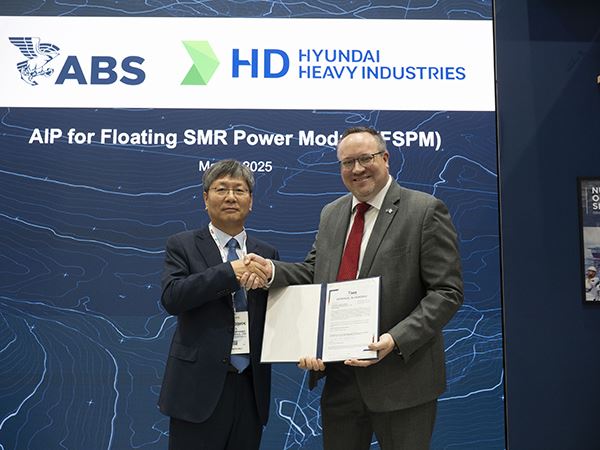HD Hyundai Heavy Industries (HHI) and HD Korea Shipbuilding & Offshore Engineering (HD KSOE) have received an Approval in Principle (AIP) from the American Bureau of Shipping (ABS) for a floating power module powered by a small modular reactor (SMR).
The design, assessed under ABS’s Requirements for Nuclear Power Systems for Marine and Offshore Applications, envisions a floating nuclear platform capable of supporting port operations, microgrids, industrial clusters, and even remote coastal communities. ABS’s review focused on safety protocols, regulatory readiness, and technical feasibility specific to marine environments—underscoring the shifting risk profile of modern SMR technologies compared to legacy nuclear systems.
Floating nuclear concepts are re-emerging as a viable clean energy option, largely due to advancements in SMR design. Unlike traditional large-scale reactors, SMRs are factory-fabricated, scalable, and deployable in modular units, reducing both capital risk and construction lead times. Furthermore, they utilize lower-enrichment fuels and passive safety features, enhancing their appeal for mobile or isolated deployment scenarios.
The AIP awarded to HHI and HD KSOE adds momentum to a growing body of collaborative nuclear maritime projects. It is the second floating nuclear power barge concept to receive AIP from ABS and complements earlier joint efforts between the Korean shipbuilder and classification society, including a conceptual design for a 15,000 TEU nuclear-propelled container ship.
Although SMRs offer clear benefits—zero-emissions base load power, small footprint, and operational flexibility—significant technical and regulatory barriers remain. Offshore nuclear deployment requires robust containment, redundancy in cooling systems, seismic and tsunami resilience, and navigation compliance with international maritime law and nuclear safety conventions.
The industry is watching closely as HD KSOE navigates these complexities. South Korea’s shipbuilding sector already commands a dominant share of global liquefied natural gas (LNG) carrier construction, and the integration of nuclear power could unlock new export pathways for energy and shipbuilding technologies alike.
Stay updated on the latest in energy! Follow us on LinkedIn, Facebook, and X for real-time news and insights. Don’t miss out on exclusive interviews and webinars—subscribe to our YouTube channel today! Join our community and be part of the conversation shaping the future of energy.





